How Much Does a Coal-Fired Boiler Cost? Price Factors & Installation Guide
Investing in a coal-fired boiler is a major capital decision for any industrial facility. Costs can vary dramatically based on capacity, design, emission control requirements, and site conditions. Without proper budgeting and specification, buyers may face unexpected overruns, longer installation times, and higher lifecycle expenses.
A new industrial coal-fired boiler typically costs between $25,000 and $150,000 for small to mid-sized units (0.5–10 t/h capacity), while large-capacity systems (20–100 t/h or more) with advanced emission controls can range from $200,000 to over $1 million. Total installed cost—including auxiliary systems, piping, structural work, and compliance equipment—can be 1.5–3 times the boiler’s base price. Prices depend heavily on capacity, pressure rating, fuel handling systems, automation level, and environmental regulations in the installation region.
Understanding the cost breakdown helps businesses plan for both purchase and long-term operational expenses.
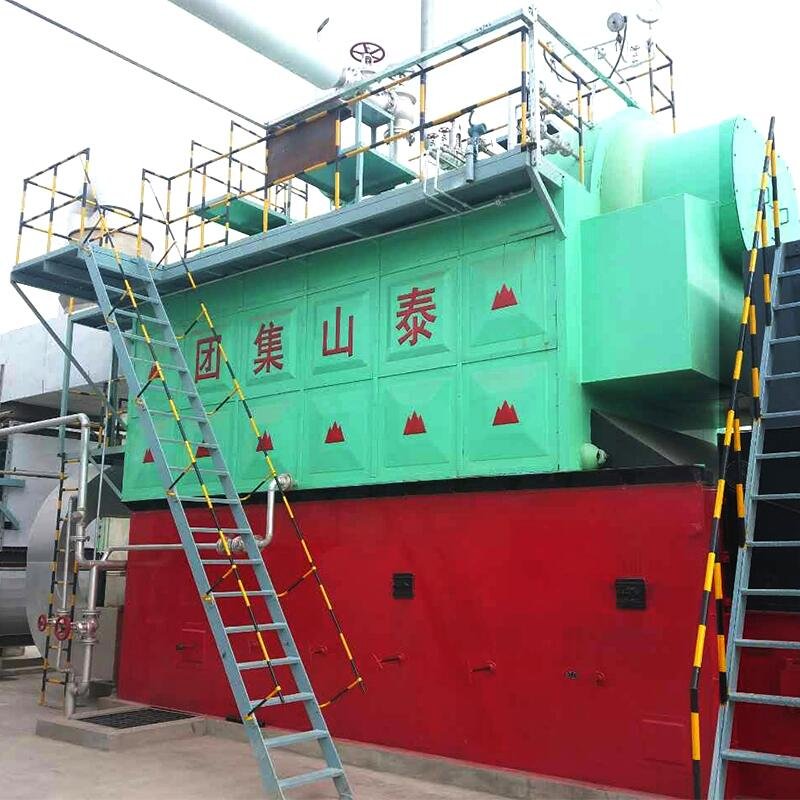
What Factors Influence the Base Price of a Coal-Fired Boiler?
When purchasing a coal-fired boiler, many buyers focus only on the capacity and brand—but the base price is actually shaped by a combination of design, performance, fuel handling systems, and regulatory compliance features. Ignoring these factors can lead to unexpected budget overruns and compatibility issues during installation or operation. A clear understanding of these price drivers helps avoid mismatches between process needs and investment costs.
The base price of a coal-fired boiler is primarily determined by its steam capacity, pressure rating, combustion technology, material construction, emission control requirements, automation level, and fuel handling system design, with each factor directly impacting manufacturing complexity and raw material costs.
While many cost elements like installation and auxiliary systems are additional, the core boiler unit price reflects its engineering complexity, durability, and compliance readiness.
Coal-fired boiler prices depend solely on steam output capacity.False
While capacity is a major factor, base prices are also influenced by pressure rating, materials, combustion type, emission controls, and automation level.
🔍 Primary Factors Affecting Base Price
| Factor | Impact on Price | Reason |
|---|---|---|
| Steam Capacity (t/h) | High | Larger units require more steel, welding, and heat exchange surface area |
| Pressure Rating (bar) | Medium–High | Higher pressure needs thicker plates, stronger drums, certified welding |
| Combustion Type | High | Pulverized coal systems cost more than chain grate or fluidized bed designs |
| Material Grade | Medium–High | Corrosion-resistant or high-alloy steels raise material costs |
| Emission Control Design | High | Low-NOx burners, flue gas desulfurization (FGD) prep increase base cost |
| Automation & Control | Medium | PLC/SCADA systems with advanced monitoring increase upfront price |
| Fuel Feeding System | Medium | Sophisticated coal handling and metering add engineering complexity |
| Manufacturing Standards | Medium–High | Compliance with ASME, EN, or local codes increases certification costs |
⚙️ Comparison by Combustion Technology
| Technology | Relative Cost | Efficiency | Fuel Flexibility | Notes |
|---|---|---|---|---|
| Chain Grate/Stoker | $ | Moderate | Low–Medium | Simple, lower capital cost |
| Circulating Fluidized Bed (CFB) | $$ | High | High | Handles varied coal grades, lower emissions |
| Pulverized Coal (PC) | $$$ | Very High | Low | For large-scale power generation, highest capital cost |
📊 Material & Pressure Impact on Cost
| Pressure Level | Required Material Thickness | Relative Cost Impact |
|---|---|---|
| < 25 bar | Standard steel plates (mild steel) | Low |
| 25–65 bar | Thicker carbon steel, improved welding | Medium |
| > 65 bar | High-grade alloy steels, advanced NDT | High |
🧠 Other Influential Elements
Design Life Expectancy – Units designed for >30 years have more robust construction.
Transport & Modularization – Factory-assembled modules can increase base cost but save on site work.
Local Manufacturing vs. Import – Importing may add shipping, tariffs, and compliance adaptation costs.
Future-Proofing – Designing for future emission upgrades adds upfront cost but reduces retrofitting expense.
✅ Conclusion
In essence, the base price of a coal-fired boiler is not simply “price per ton of steam per hour.” It’s a sum of engineering specifications, safety compliance, and operational goals. High-pressure, emission-ready, automated boilers with premium materials will naturally sit at the upper end of the cost spectrum.
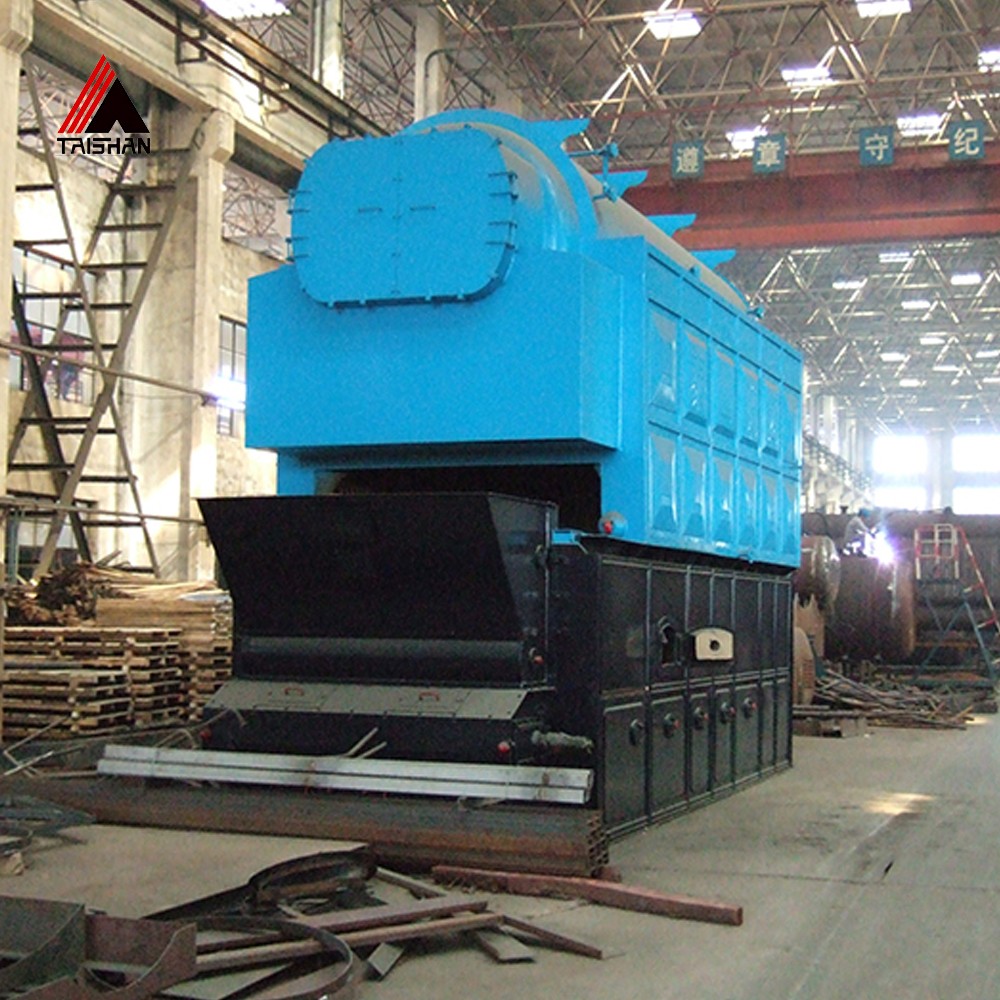
How Do Capacity and Pressure Rating Affect the Cost of a Coal-Fired Boiler?
When buyers look at coal-fired boiler prices, the first specs they often notice are capacity (tons of steam per hour) and pressure rating (bar/MPa). These two parameters are not just performance indicators—they are direct cost multipliers. Choosing higher capacity or higher pressure can push manufacturing complexity, material requirements, and certification needs significantly higher, affecting both the base price and the total cost of ownership.
Increasing steam capacity raises the cost due to larger heat transfer surfaces, bigger pressure vessels, and stronger structural support, while higher pressure ratings increase cost because thicker, higher-grade steel, specialized welding, and stricter code compliance are required.
In other words, a 50 t/h boiler at 80 bar will cost much more than a 20 t/h boiler at 20 bar, even if both use the same combustion technology, because both size and pressure compound the complexity.
Boiler capacity and pressure rating affect cost only in proportion to size.False
Pressure rating impacts material selection, welding, and inspection requirements independently of capacity, making high-pressure small boilers sometimes costlier than low-pressure large boilers.
📊 Capacity Impact on Cost
| Capacity (t/h) | Typical Steel Requirement Increase | Relative Cost Impact | Key Drivers |
|---|---|---|---|
| 10 | Baseline | $ | Small drums, less tubing |
| 20 | +40% | $$ | Larger drums, more heating surface |
| 50 | +120% | $$$$ | Heavier structural frame, more tubes, bigger feedwater system |
| 100+ | +300% | $$$$$ | Requires modular transport, special lifting gear, higher fabrication complexity |
📊 Pressure Rating Impact on Cost
| Pressure (bar) | Material Thickness Increase | Material Type | Relative Cost Impact | Additional Requirements |
|---|---|---|---|---|
| < 25 | Baseline | Mild carbon steel | $ | Standard welding |
| 25–45 | +40% | Higher-grade carbon steel | $$ | Enhanced NDT inspections |
| 45–80 | +80% | Alloy steel | $$$$ | Certified welding, pre- and post-weld heat treatment |
| > 80 | +150% | Cr-Mo alloy steel | $$$$$ | Strict ASME/EN compliance, full radiographic inspection |
🔍 Why These Factors Compound
Bigger capacity = more tubes, more drums, bigger foundations.
Higher pressure = thicker materials, more expensive alloys, specialized welding.
High capacity + high pressure = exponential increase in complexity (design, transport, testing).
For example:
A 50 t/h boiler at 30 bar may cost 1.5–2× more than a 20 t/h boiler at the same pressure.
Increasing that same 50 t/h unit from 30 bar to 80 bar can add another 30–50% to the base price.
✅ Conclusion
Capacity and pressure rating are the two biggest price levers for a coal-fired boiler. They drive not only the size of the pressure vessel and heating surface but also the choice of materials, welding standards, and inspection regimes. The relationship is non-linear—cost increases faster than capacity or pressure due to compounding engineering requirements.
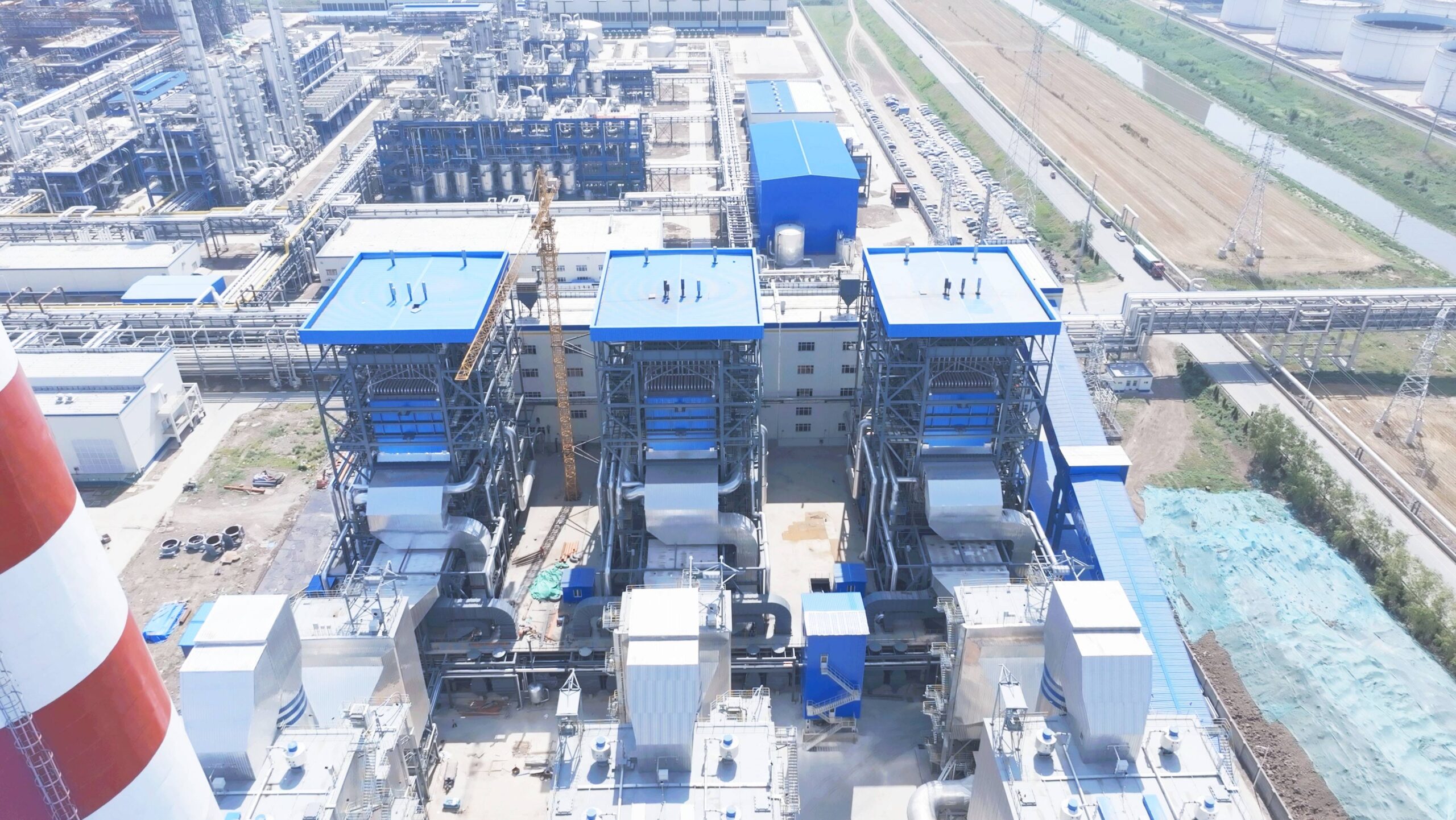
What Role Do Emission Control Systems Play in the Pricing of Coal-Fired Boilers?
When budgeting for a coal-fired boiler, many buyers focus on capacity, pressure, and fuel handling systems—but emission control systems can account for 20–40% of the total plant cost. Modern regulations require power and industrial boilers to limit emissions such as particulate matter (PM), sulfur oxides (SOₓ), nitrogen oxides (NOₓ), mercury, and greenhouse gases, and meeting these standards requires specialized, high-cost equipment.
Emission control systems directly influence capital cost, operating cost, and maintenance complexity because they add specialized hardware like electrostatic precipitators, bag filters, flue gas desulfurization (FGD) units, selective catalytic reduction (SCR) systems, and continuous emission monitoring systems (CEMS).
Emission control systems are optional for coal-fired boilers in most industrialized countries.False
Most jurisdictions mandate emission controls to meet air quality standards, and compliance is enforced by permits, inspections, and continuous monitoring requirements.
📊 Common Emission Control Equipment and Cost Impact
| System Type | Main Pollutant Controlled | Typical Cost Range (% of Boiler Price) | Notes |
|---|---|---|---|
| Electrostatic Precipitator (ESP) | Particulate matter (PM10, PM2.5) | 8–15% | Efficient for large-scale plants, low OPEX |
| Baghouse / Fabric Filter | Fine dust and particulates | 10–20% | Higher efficiency for ultra-fine particles |
| Flue Gas Desulfurization (FGD) | SO₂ | 15–30% | Wet or dry types; wet FGD is more expensive but more efficient |
| Selective Catalytic Reduction (SCR) | NOₓ | 10–20% | Requires catalyst replacement every 3–5 years |
| Mercury Control (Activated Carbon Injection) | Mercury, trace metals | 5–10% | Often added to baghouse systems |
| Continuous Emission Monitoring System (CEMS) | Regulatory compliance | 2–5% | Required for reporting in most regulated markets |
🔍 How Emission Controls Affect Overall Pricing
Higher Capital Expenditure (CAPEX) – Installing multiple systems in series (ESP + FGD + SCR) can nearly double the cost of a bare boiler.
Increased Space and Structural Requirements – These systems require additional foundations, ductwork, fans, and support steel.
Added Operational Cost (OPEX) – Includes reagent consumption (lime, ammonia, activated carbon), electricity for fans/pumps, and catalyst replacement.
Extended Delivery Time – Complex systems can add 4–8 months to project timelines.
📈 Example Cost Scenarios for a 50 t/h, 80 bar Coal-Fired Boiler
| Emission Compliance Level | Required Systems | Estimated Price Impact | Total Plant Cost Impact |
|---|---|---|---|
| Basic dust control only | ESP | +12% | +8% of total plant cost |
| PM + SO₂ control | ESP + FGD | +35% | +25% of total plant cost |
| PM + SO₂ + NOₓ control | ESP + FGD + SCR | +55% | +40% of total plant cost |
| Full compliance (PM, SO₂, NOₓ, Hg) | ESP + FGD + SCR + ACI + CEMS | +70% | +50% of total plant cost |
✅ Conclusion
Emission control systems are not an optional add-on—in most jurisdictions, they are mandatory and have a major influence on both upfront and lifetime costs. Their selection must balance regulatory requirements, fuel sulfur/nitrogen content, plant location, and OPEX tolerance. In many cases, emission systems cost as much as the boiler itself and must be planned in from the earliest design stage to avoid costly retrofits.
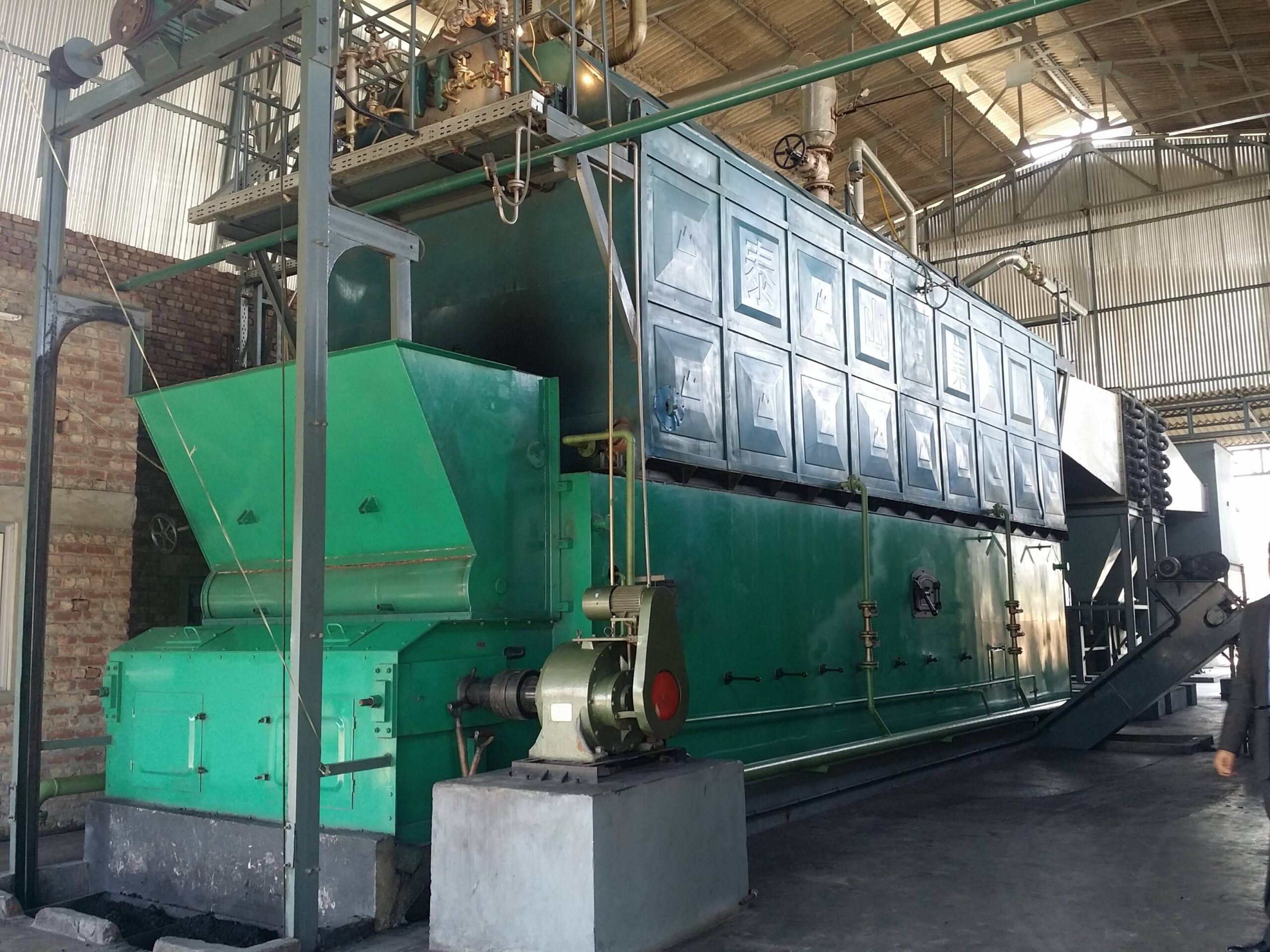
How Much Does Installation and Commissioning Add to the Total Cost of a Coal-Fired Boiler Project?
When planning a coal-fired boiler purchase, many project teams underestimate installation and commissioning (I&C) costs. While the boiler unit itself may represent the largest single expense, I&C can add 20–40% to the total plant budget depending on site conditions, system complexity, and regulatory requirements. Ignoring these costs during budgeting can lead to serious funding shortfalls or project delays.
Installation and commissioning costs typically include unloading and positioning of the boiler, structural steel erection, piping and ductwork connections, electrical and control wiring, integration of auxiliaries, pre-commissioning testing, and performance validation runs.
Boiler installation costs are usually less than 5% of the total plant cost.False
In most industrial boiler projects, installation and commissioning represent 20–40% of the total plant cost, especially for large coal-fired systems with extensive auxiliaries.
📊 Typical Cost Breakdown for Installation & Commissioning
| Category | Typical Cost Range (% of Boiler Price) | Key Factors |
|---|---|---|
| Civil works & foundations | 5–10% | Concrete pads, pilings, load-bearing structures |
| Mechanical installation | 8–15% | Erection of pressure parts, ducting, fans, economizers |
| Piping & ducting | 5–12% | Steam, feedwater, blowdown, flue gas |
| Electrical & control wiring | 3–6% | Motor control centers, cable trays, sensors |
| Auxiliary system integration | 2–5% | Pumps, tanks, emission controls |
| Pre-commissioning tests | 1–3% | Hydrotest, safety checks, electrical continuity |
| Commissioning & trial runs | 2–4% | Full-load tests, emissions verification, tuning |
🔍 Factors That Increase Installation & Commissioning Costs
Site Access and Crane Requirements – Tight spaces or remote locations require specialized lifting equipment.
Custom Engineering – Non-standard foundations, layouts, or emission control retrofits increase complexity.
High-Pressure/High-Capacity Units – More structural steel, piping, and safety systems to install.
Integration with Existing Systems – Retrofitting into an operational plant demands more labor and downtime planning.
Regulatory Testing and Certification – Extended trial runs and third-party inspections can add weeks of commissioning labor.
📈 Example Installation Cost Scenarios for a 50 t/h, 80 bar Coal-Fired Boiler
| Project Type | Installation & Commissioning Cost (% of Boiler Price) | Notes |
|---|---|---|
| New plant, greenfield site | 20–25% | Ample space, optimized layout |
| Brownfield, easy access | 25–30% | Tie-ins to existing systems |
| Brownfield, tight space | 30–40% | Crane limitations, high labor hours |
| Complex retrofit with emissions upgrades | 35–45% | Multiple shutdowns, regulatory compliance testing |
✅ Conclusion
Installation and commissioning are major cost drivers in coal-fired boiler projects, often equaling a quarter to a third of the boiler’s purchase price. For high-capacity or retrofit projects, these costs can be even higher. Careful front-end engineering design (FEED), site surveys, and realistic schedule planning are essential to avoid budget overruns.
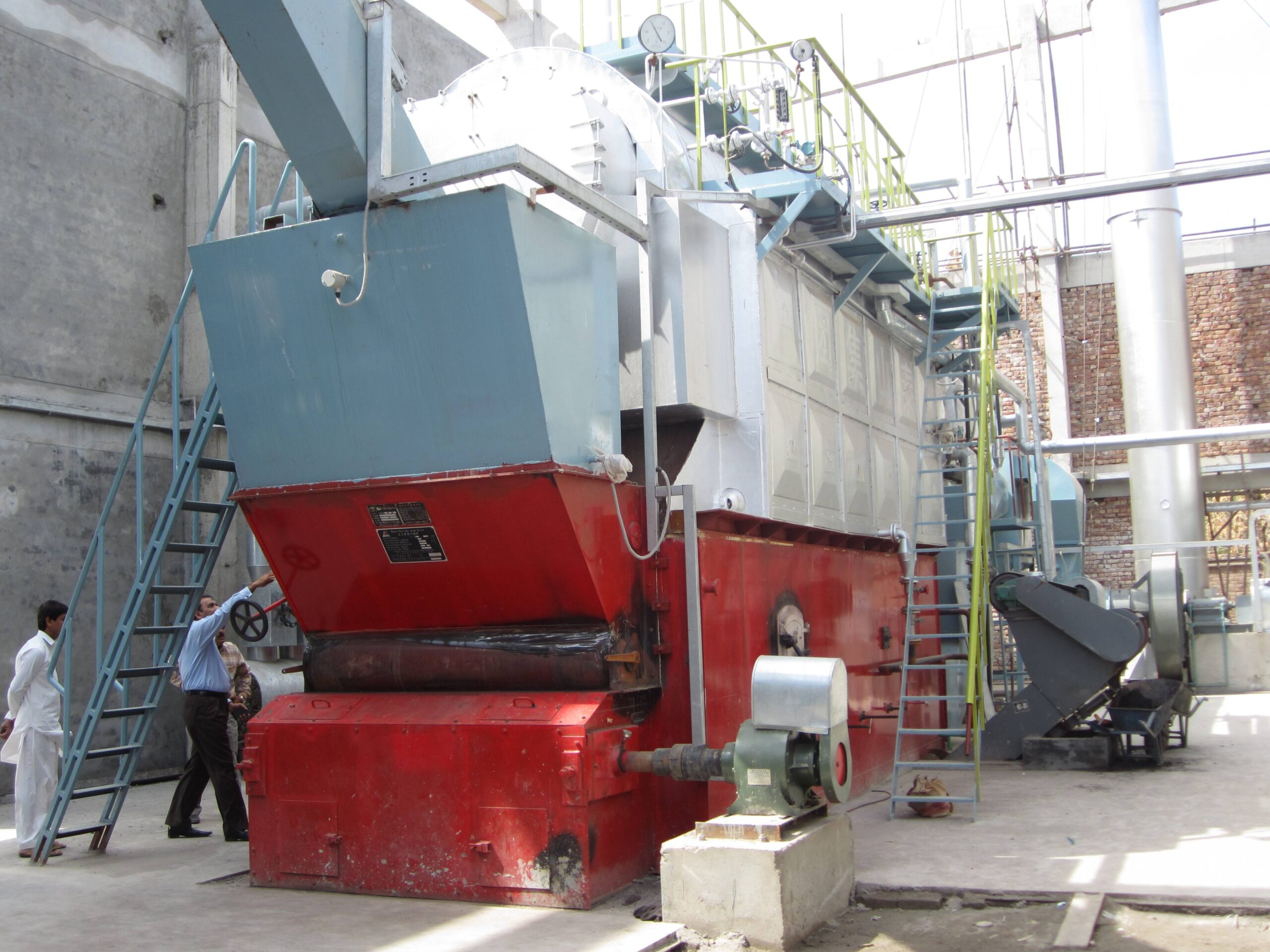
What Are the Operating and Maintenance Costs Over the Lifetime of an Industrial Coal-Fired Boiler?
Running a coal-fired boiler is not just about the upfront purchase price — operating and maintenance (O&M) costs over its 20–30 year lifespan often surpass the initial investment. Failing to plan for these recurring expenses can undermine plant profitability, compromise safety, and shorten service life. O&M costs are influenced by fuel prices, maintenance intervals, spare parts usage, labor, and compliance with environmental regulations.
Over a typical lifespan, O&M costs for a coal-fired boiler can amount to 3–6 times its purchase price, with fuel being the single largest contributor (60–80% of total O&M costs).
Fuel costs are usually less than 30% of total O&M expenses for coal-fired boilers.False
For coal-fired boilers, fuel accounts for the majority of lifetime operating costs — often 60–80% — while labor, maintenance, and compliance make up the rest.
📊 Typical Annual Operating & Maintenance Cost Breakdown
| Category | Share of Annual O&M Cost | Notes |
|---|---|---|
| Fuel (coal purchase, handling, transport) | 60–80% | Highly dependent on coal market prices and plant efficiency |
| Routine maintenance & inspections | 5–10% | Scheduled shutdowns, wear part replacement |
| Labor (operations staff) | 5–8% | Control room operators, technicians |
| Spare parts & consumables | 3–6% | Gaskets, tubes, refractory, lubricants |
| Water treatment chemicals | 2–4% | Scale prevention, corrosion control |
| Ash handling & disposal | 2–4% | Fly ash and bottom ash systems |
| Emissions monitoring & compliance | 2–5% | Continuous emissions monitoring systems (CEMS), testing fees |
📈 Lifetime Cost Projection for a 50 t/h, 80 bar Coal-Fired Boiler (20-Year Service Life)
| Cost Component | % of Total Lifetime Cost | Estimated Range (USD) |
|---|---|---|
| Fuel | 65–75% | $45M–$60M |
| Maintenance (routine + major overhauls) | 10–15% | $7M–$12M |
| Labor | 6–8% | $4M–$6M |
| Water treatment | 2–4% | $1.5M–$3M |
| Ash & waste disposal | 2–3% | $1.2M–$2.4M |
| Compliance & monitoring | 2–4% | $1.5M–$3M |
| Total O&M Over 20 Years | 100% | $60M–$80M |
🔧 Key Maintenance Activities and Their Cost Drivers
Tube cleaning and replacement – Fouling and corrosion in water/steam circuits can reduce efficiency by 3–5% if neglected.
Refractory repair – Worn furnace linings increase heat loss and risk of structural damage.
Fan and motor servicing – Prevents breakdowns in induced draft (ID) and forced draft (FD) systems.
Emission system upkeep – ESPs, baghouses, and scrubbers require regular inspection and bag/filter changeouts.
Scheduled outages – Annual or biannual shutdowns for inspections, hydrotesting, and control system calibration.
✅ Conclusion
For a coal-fired boiler, lifetime O&M costs dwarf the purchase price. Fuel is the dominant cost driver, followed by scheduled maintenance and labor. Efficient operation, proactive maintenance, and investment in performance monitoring systems can significantly reduce lifetime costs while extending equipment life.
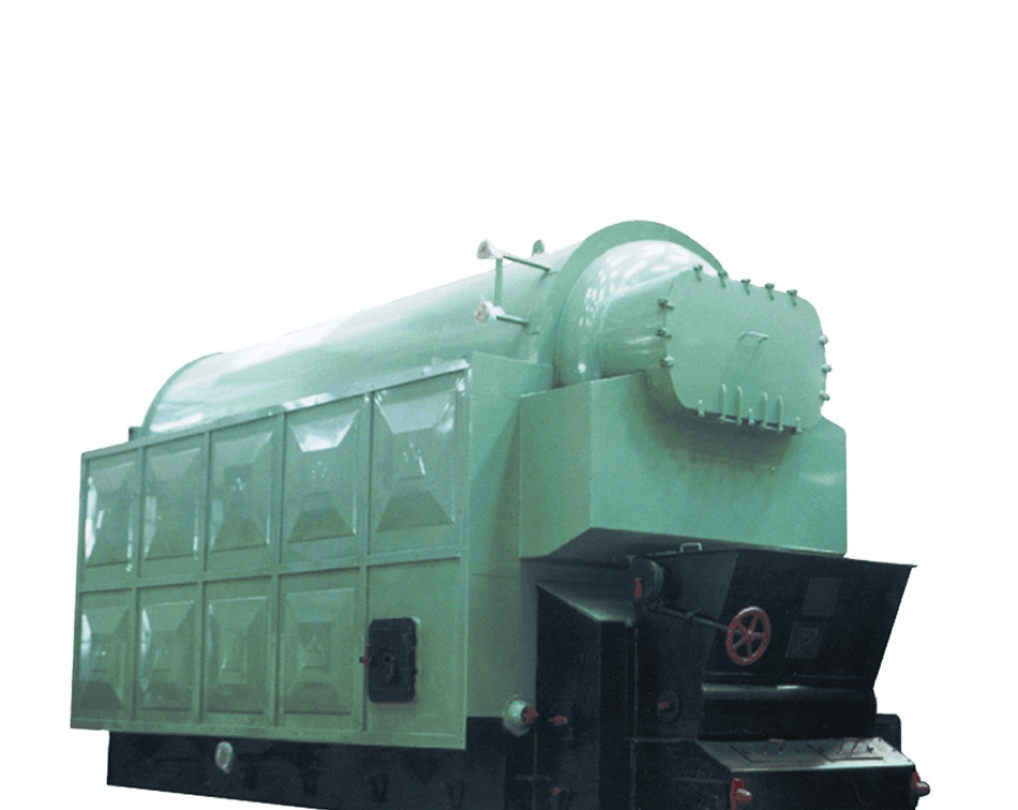
How Can Buyers Optimize Industrial Boiler Costs Without Sacrificing Performance or Compliance?
Purchasing and operating an industrial boiler can consume a significant portion of an organization’s capital and operational budget. The risk many buyers face is focusing only on the lowest upfront price, which often results in higher lifetime costs, operational inefficiencies, or costly compliance failures. The real challenge is balancing capital cost savings with long-term performance, energy efficiency, and adherence to environmental and safety regulations.
Buyers can optimize boiler costs by selecting the right capacity and design for their needs, investing in proven efficiency technologies, and ensuring that compliance is built into the initial design rather than added later at higher expense.
Cutting initial capital expenditure by selecting undersized boilers always leads to lower lifetime costs.False
Undersized boilers often operate at higher stress levels, leading to more breakdowns, reduced efficiency, and higher maintenance costs over time.
📊 Cost Optimization Strategies for Industrial Boilers
| Strategy | Implementation | Impact on Cost & Performance |
|---|---|---|
| Accurate load analysis | Use process audits and software modeling to determine true steam/hot water demand | Avoids oversizing (higher capital cost) and undersizing (efficiency loss) |
| Invest in efficiency upgrades | Economizers, air preheaters, O₂ trim, and VFDs for fans/pumps | Reduces fuel consumption 5–15% annually |
| Fuel flexibility | Select multi-fuel burners or convertible designs | Allows switching to lower-cost fuels as markets change |
| Lifecycle cost analysis (LCCA) | Compare options over 15–25 years, not just purchase price | Prevents buying low-cost but high-maintenance units |
| Proactive maintenance contracts | Partner with OEMs or certified service providers | Reduces unplanned downtime and major repair costs |
| Compliance-ready design | Integrate NOx/SOx control and CEMS from the start | Avoids expensive retrofits and legal penalties |
| Automation & monitoring | Use PLC/DCS with remote diagnostics | Maintains peak efficiency and extends lifespan |
📈 Example: Impact of Economizers and O₂ Trim on a 50 t/h Coal-Fired Boiler
| Upgrade | Capital Cost (USD) | Annual Fuel Savings | Payback Period | CO₂ Reduction |
|---|---|---|---|---|
| Economizer | $150,000 | $80,000 | 1.9 years | 750 t/year |
| O₂ Trim Control | $60,000 | $30,000 | 2 years | 280 t/year |
| Combined | $210,000 | $110,000 | < 2 years | 1,030 t/year |
🔑 Key Takeaways for Cost Optimization Without Risk
Size it right – Precise demand assessment ensures you’re not paying for unused capacity or suffering from strain due to undersizing.
Think lifetime, not just purchase – Include maintenance, fuel, and compliance costs in the decision-making process.
Leverage modern control tech – Automation improves combustion control, prevents waste, and ensures consistent compliance.
Integrate compliance early – Avoid retrofits by designing for current and upcoming environmental regulations.
Plan for maintainability – Ensure easy access to key components to reduce downtime during servicing.
✅ Conclusion
Cost optimization for industrial boilers is not about cutting corners — it’s about smart design choices, predictive maintenance, and integrating efficiency and compliance from day one. The cheapest boiler to buy can be the most expensive to own, while the right investment in efficiency and reliability can yield millions in fuel savings and compliance cost avoidance over its lifetime.
🔍 Conclusion
Coal-fired boiler costs depend on size, technology, and compliance requirements. Considering both capital and operational expenses ensures you make a cost-effective, regulatory-compliant investment.
📞 Contact Us
💡 Need a precise quotation for a coal-fired boiler project? We provide cost analysis, custom design, and turnkey installation for industrial coal-fired steam systems.
🔹 Get an accurate price and complete cost plan for your coal-fired boiler investment. 🏭🔥📊✅
FAQ
How much does a coal-fired boiler cost?
The purchase price of a coal-fired industrial boiler typically ranges from $50,000 to $500,000+, depending on:
Capacity (tons of steam per hour)
Pressure rating (low, medium, high pressure)
Design type (chain grate, circulating fluidized bed, pulverized coal)
Automation level and emission control systems
Small package units for commercial use may cost under $100,000, while large power plant boilers can exceed $1 million.
What is the total installed cost of a coal-fired boiler?
Installation often adds 30–50% to the purchase price, covering:
Foundations and structural work
Fuel handling systems (conveyors, crushers, storage silos)
Piping and ducting
Electrical and control systems
Emission control equipment (baghouse filters, scrubbers)
For example, a $300,000 boiler could have an installed cost of $400,000–$450,000.
What are the operating costs of a coal-fired boiler?
Key ongoing costs include:
Coal fuel cost (varies by region and grade)
Ash disposal and handling
Labor and maintenance
Emission compliance fees (if applicable)
Water treatment
Coal is often cheaper per energy unit than gas or oil but requires more maintenance and environmental control.
What factors influence the price of a coal-fired boiler?
Major cost drivers include:
Boiler capacity and efficiency
Type of coal used (lignite, bituminous, anthracite)
Emission control technology (electrostatic precipitators, desulfurization)
Automation level and fuel handling complexity
Supplier reputation and warranty coverage
Higher efficiency and stricter emissions compliance increase upfront costs but reduce long-term expenses.
Is a coal-fired boiler still a good investment?
Coal-fired boilers can be cost-effective in regions with:
Abundant and low-cost coal supply
Limited access to natural gas
High steam demand for industrial processes
However, investors must consider environmental regulations, carbon pricing, and future fuel availability when planning long-term operations.
References
IEA – Coal-Fired Power Generation Costs – https://www.iea.org
Spirax Sarco – Industrial Boiler Selection Guide – https://www.spiraxsarco.com
Cleaver-Brooks – Solid Fuel Boiler Systems – https://www.cleaverbrooks.com
Hurst Boiler – Coal Boiler Product Range – https://www.hurstboiler.com
Thermodyne – Coal Boiler Pricing Factors – https://www.thermodyneboilers.com
BioEnergy Consult – Coal Combustion Technologies – https://www.bioenergyconsult.com
EPA – Emission Standards for Solid Fuel Boilers – https://www.epa.gov
Engineering Toolbox – Energy Content of Coal Types – https://www.engineeringtoolbox.com
Powerhouse – Industrial Boiler Cost Analysis – https://www.powerhouse.com
DNV – Cost Estimation for Power Boilers – https://www.dnv.com

